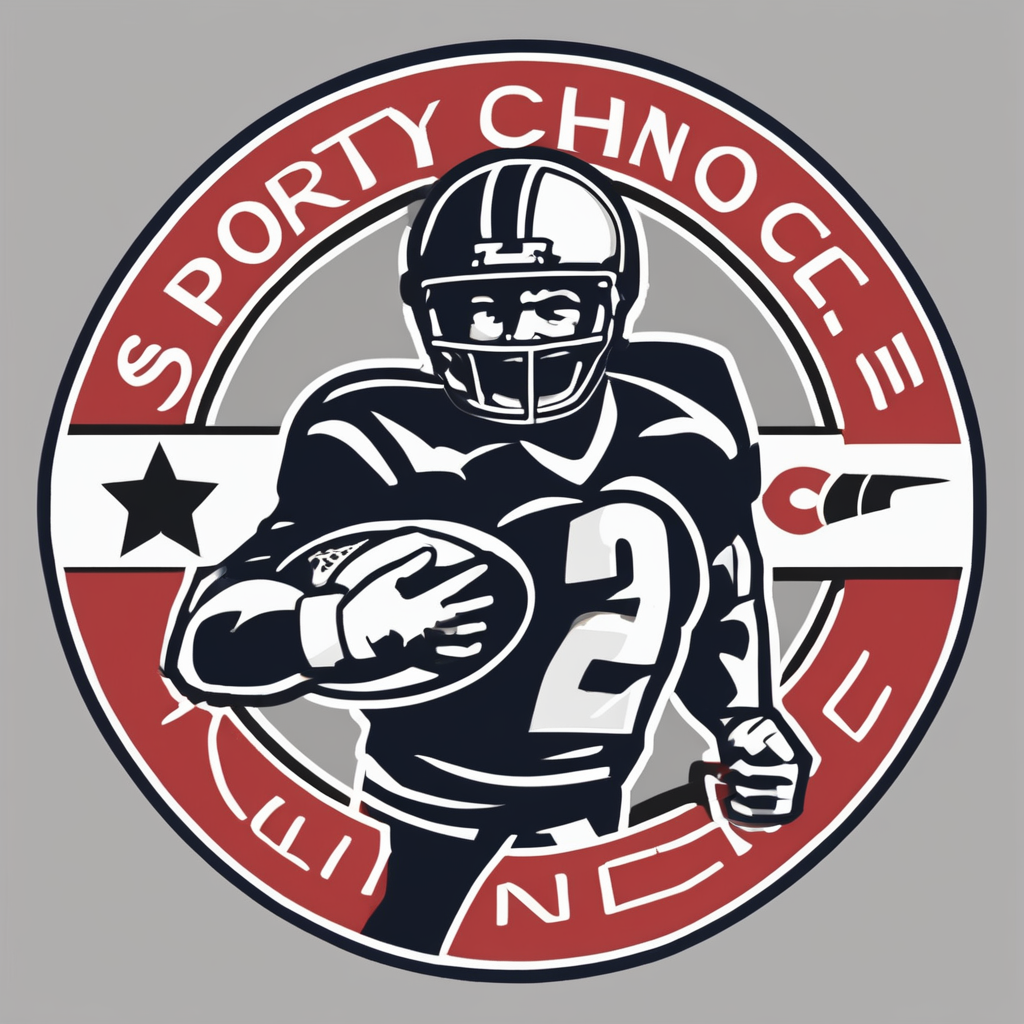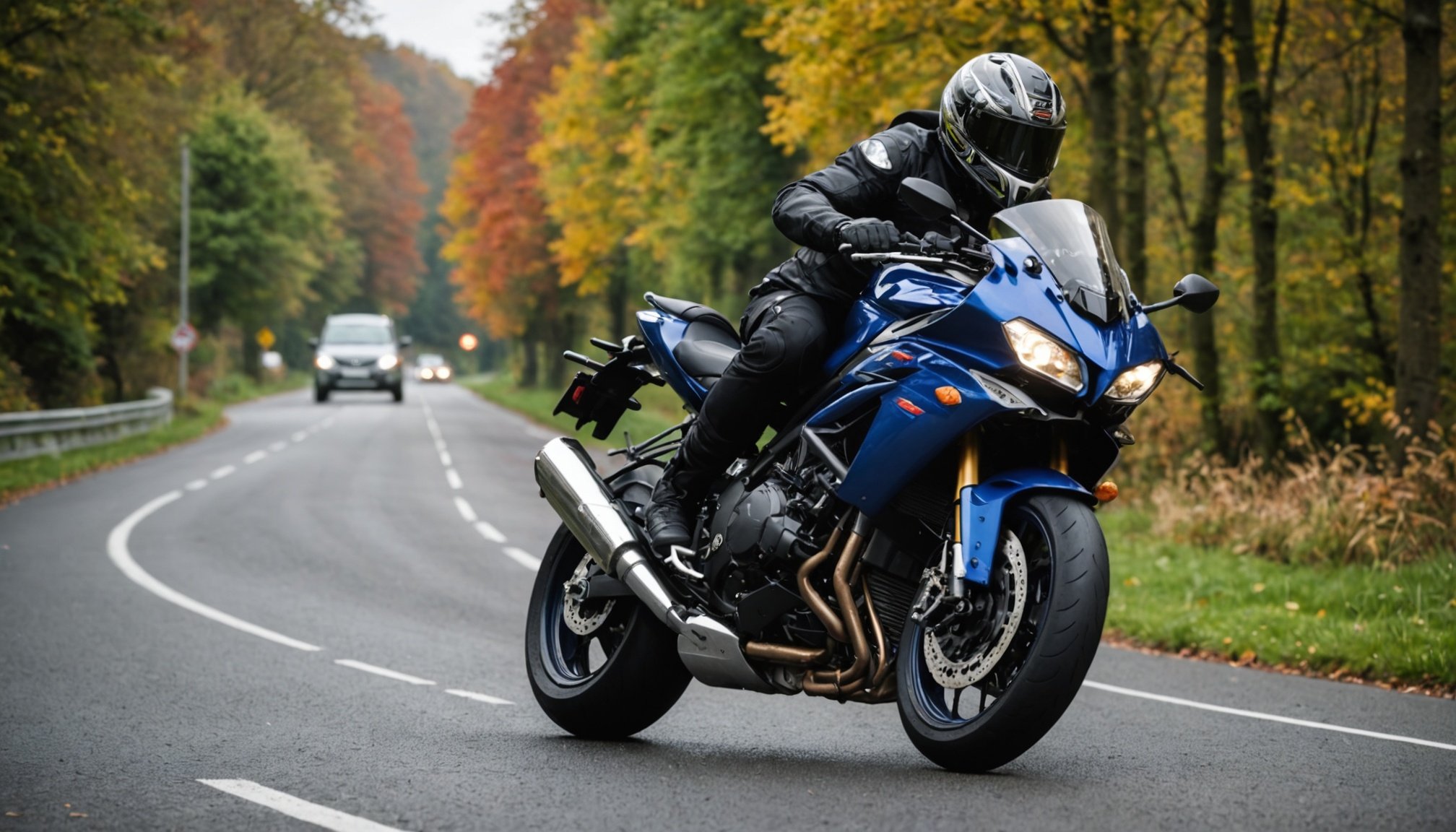Essential Tips for Safely Sharing the Road with Larger Vehicles on Your Sport Bike in the UK
Understanding the Highway Code and Its Implications
When riding your sport bike on UK roads, it’s crucial to have a solid grasp of the Highway Code, especially when it comes to interacting with larger vehicles. The Highway Code is not just a set of guidelines; it’s a blueprint for road safety that all road users must adhere to.
Giving Priority to Buses and Coaches
One often overlooked rule is giving priority to buses, coaches, and trams. While it’s not a legal requirement, it’s highly recommended to let these larger vehicles pull away from stops safely. This courtesy not only avoids confusion but also prevents the possibility of a large bus pulling into your path unexpectedly. Remember, buses must indicate and wait for a gap in traffic, just like other vehicles, but showing them extra consideration can go a long way in maintaining road harmony.
Topic to read : Discover the UK”s Top Scenic Routes Perfect for Weekend Sport Bike Adventures
Avoiding Bus Lanes
Another critical aspect is the use of bus lanes. It might be tempting to use a bus lane to ease congestion, but doing so during operational hours can result in fines. In London, this fine can be as high as £130, and outside London, it’s £70. Cameras are increasingly being used to monitor these lanes, so it’s essential to respect the rules.
Navigating Through Traffic Safely
Avoiding Double White Lines
Crossing double white lines in the middle of the road is forbidden by law if the line nearest to you is solid. However, there are exceptions, such as entering adjoining premises or a side road, or safely overtaking a pedal cycle, horse, or road maintenance vehicle traveling at 10mph or under. Despite these exceptions, many drivers still straddle or cross these lines, which can be dangerous and illegal.
Also read : Ultimate Guide to Washing and Detailing Your Sport Bike: Top Tips for UK Riders
Undertaking and Middle-Lane Hogging
Undertaking, or passing a vehicle on its near (left) side, is generally frowned upon but is acceptable in certain conditions, such as on multi-lane carriageways in congested conditions or when the vehicle in front is signaling to turn right. However, this does not justify the reckless behavior often seen on the roads. Middle-lane hogging, where vehicles remain in the middle lane longer than necessary, is also a significant issue. New laws introduced in 2013 allow police to issue on-the-spot fines of £100 and three penalty points for this offense.
Visibility and Communication
Using Lights and Reflectors
Visibility is key when riding a bike, especially at night. According to bike light laws in the UK, you must use a front white light and a rear red light between sunset and sunrise. For maximum visibility, a mix of steady and flashing bike lights is recommended. This setup helps you be seen in crowded urban settings without distorting other road users’ depth perception.
Riding in the Right Position
To increase your visibility, ride a little way out into the road, about 70cm to 1m from the edge. This position helps you stay in the field of vision of drivers and avoids obstacles like potholes and drain covers. Make your intentions known to others earlier than you would in daylight to ensure safe interactions.
Interacting with Other Road Users
Extra Care for Cyclists and Horse Riders
When sharing the road with cyclists and horse riders, extra care is essential. Cyclists often use cycle lanes, but these lanes may not always be available or safe. Be cautious when overtaking cyclists, and make sure to give them enough space. For horse riders, slow down and be prepared to stop if necessary. Horse riders may not always be able to control their horses as predictably as drivers control their vehicles, so patience and caution are vital.
Respecting Advanced Stop Lines
Advanced Stop Lines (ASLs) are designated areas at traffic signal junctions where cyclists can position themselves ahead of other traffic. Respect these areas and let cyclists take their place. This rule helps in maintaining road safety and ensuring that cyclists have a safe space to wait before the lights change.
Practical Tips for Safe Riding
Checking Before Opening Your Door
A simple yet often overlooked rule is to check before opening your door. This is crucial for cyclists who may be passing by. Between 2011 and 2015, there were 3,108 reported collisions where a negligently opened vehicle door was a contributing factor. Always check for cyclists or other traffic before opening your door.
Keeping Your Distance in Tunnels
When riding through tunnels, it’s important to leave at least a 5-metre gap between you and the vehicle in front. This gap accounts for the reduced visibility in tunnels and helps prevent accidents. Although it can be challenging in slow-moving traffic, maintaining this distance is crucial for road safety.
Securing Your Bike When Not in Use
Using Multiple Security Measures
When your bike is not in use, securing it properly is essential to prevent theft. Here are some tips:
- Motorcycle Disc Lock: Use a light and portable disc lock that conforms to the latest testing authority standards. Combine this with a motorcycle security chain for added security.
- Heavy Duty Lock and Chain: A strong padlock and large-diameter link security chain can secure your motorcycle to street furniture or a ground anchor. Ensure the chain has an integral sleeve to protect paintwork.
- Ground/Wall Anchor: Install a motorbike ground or wall anchor to provide a solid fixing point for your lock and chain. This prevents lift and take thefts.
- Motorcycle Alarm/Immobiliser: Use an alarm or immobiliser to add an extra layer of security. Avoid parking in poorly lit areas and opt for spaces with CCTV coverage.
Additional Safety Measures
Letting Someone Know Your Route
When riding, especially at night or off-road, let someone know your route and expected return time. This is particularly important if you’re venturing into isolated areas where help might be scarce in case of an emergency.
Being Aware of Hazards
Familiar roads look different at night, so it’s crucial to be aware of hazards such as slippery leaves or unseen obstacles. Stick to well-lit paths or familiar routes, and avoid taking on ambitious rides in the dark.
Sharing the road with larger vehicles requires a combination of knowledge, caution, and respect for all road users. Here are some key takeaways:
- Respect Bus Lanes and Larger Vehicles: Always give priority to buses and coaches, and avoid using bus lanes during operational hours.
- Follow Highway Code Rules: Adhere to rules about double white lines, undertaking, and middle-lane hogging.
- Enhance Visibility: Use appropriate lights and reflectors, and ride in a position that makes you visible to drivers.
- Interact Safely with Other Road Users: Be cautious around cyclists and horse riders, and respect advanced stop lines.
- Secure Your Bike: Use multiple security measures when your bike is not in use.
By following these tips, you can significantly enhance your safety and the safety of others on the road.
Detailed Checklist for Safe Riding
Here is a detailed checklist to ensure you’re prepared for safe riding:
-
Lights and Reflectors:
-
Use a front white light and a rear red light between sunset and sunrise.
-
Incorporate reflectors on your pedals and bike.
-
Ensure your lights offer side visibility.
-
Positioning on the Road:
-
Ride about 70cm to 1m from the edge of the road.
-
Avoid obstacles like potholes and drain covers.
-
Interacting with Traffic:
-
Give priority to buses and coaches.
-
Avoid crossing double white lines unless necessary.
-
Do not undertake unless in specified conditions.
-
Avoid middle-lane hogging.
-
Securing Your Bike:
-
Use a motorcycle disc lock and security chain.
-
Install a ground or wall anchor.
-
Use an alarm or immobiliser.
-
Park in well-lit, CCTV-covered areas.
-
General Safety:
-
Check for cyclists before opening your door.
-
Keep a safe distance in tunnels.
-
Let someone know your route and expected return time.
-
Be aware of hazards, especially at night.
By adhering to these guidelines, you can make your journey safer and more enjoyable for yourself and other road users.
Table: Comparison of Motorcycle Security Devices
| Security Device | Description | Benefits | Considerations |
|---|---|---|---|
| Motorcycle Disc Lock | Light and portable lock that fits onto the disc brake. | Easy to use, highly visible deterrent. | Ensure it conforms to latest testing standards. |
| Heavy Duty Lock and Chain | Strong padlock and large-diameter link chain. | Secures bike to street furniture or ground anchor. | Protect paintwork with integral sleeve. |
| Ground/Wall Anchor | Solid fixing point for lock and chain. | Prevents lift and take thefts. | Install in a secure location, ensure bolts are protected. |
| Motorcycle Alarm/Immobiliser | Alarm or immobiliser system. | Adds extra layer of security, deters thieves. | Avoid parking in poorly lit areas, opt for CCTV coverage. |
| Forensic Markers | Unique micro-coding markers like Datatag or SmartWater. | Identifies bike even if stripped and sold for parts. | Apply markers discreetly, ensure they are undetectable. |
Quotes from Experts
- “If you’re riding along unlit country lanes, you’ll need a different lighting setup to riding in an urban setting – or you may need to have a mix of lights if you’re riding through both environments,” says Woodcock from Cycling UK.
- “Studies have shown that having reflectors on your pedals, or ankles, will help you stand out more because other road users notice the elliptical movement of the pedal strokes,” continues Woodcock.
- “Be aware of the dazzle some powerful lights can cause to others, so ensure that you direct your beam of light down to the road surface to avoid blinding drivers,” advises Woodcock.
By following these tips, using the right equipment, and being mindful of your surroundings, you can ensure a safe and enjoyable ride on your sport bike, sharing the road harmoniously with larger vehicles and other road users.











